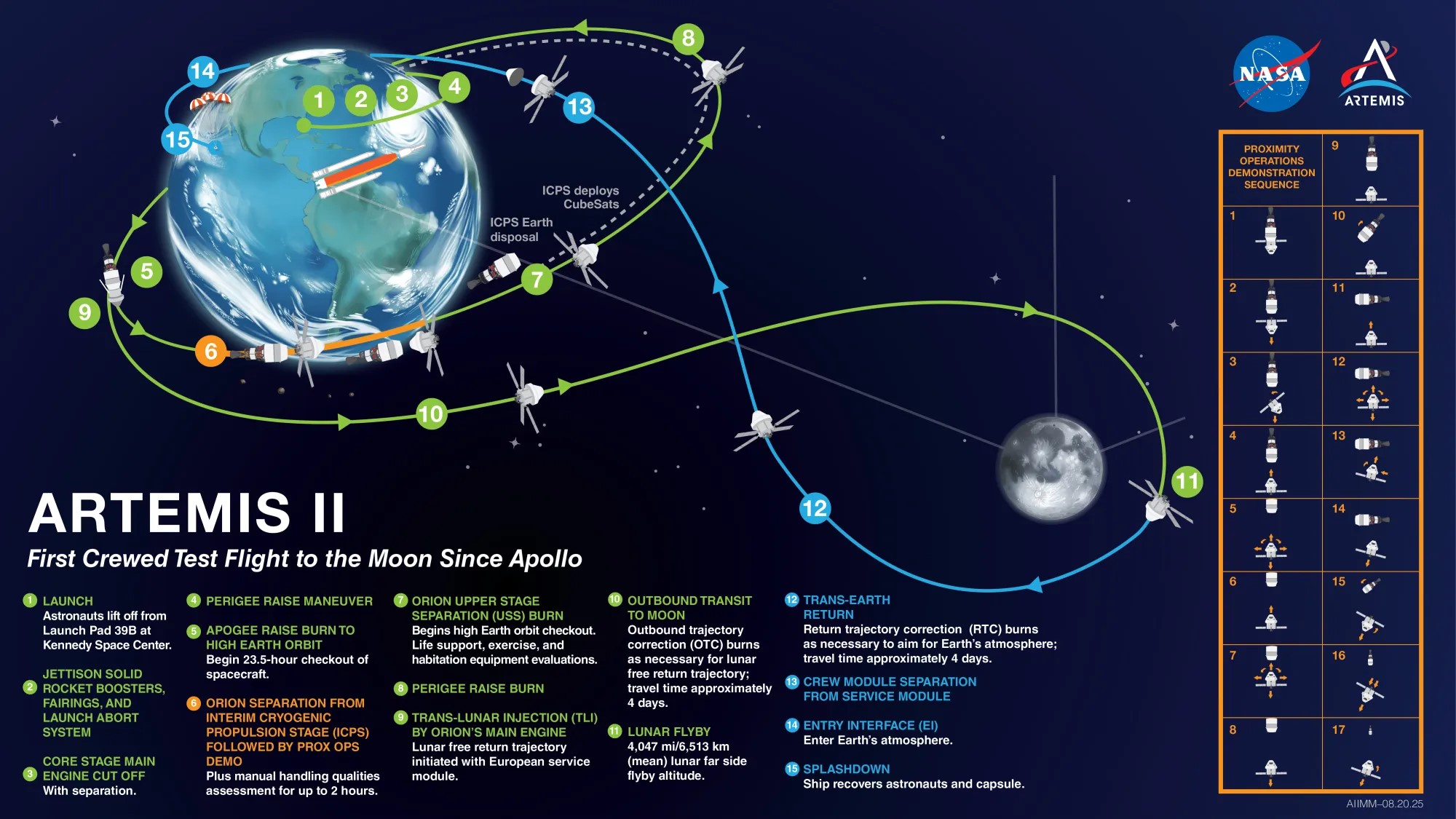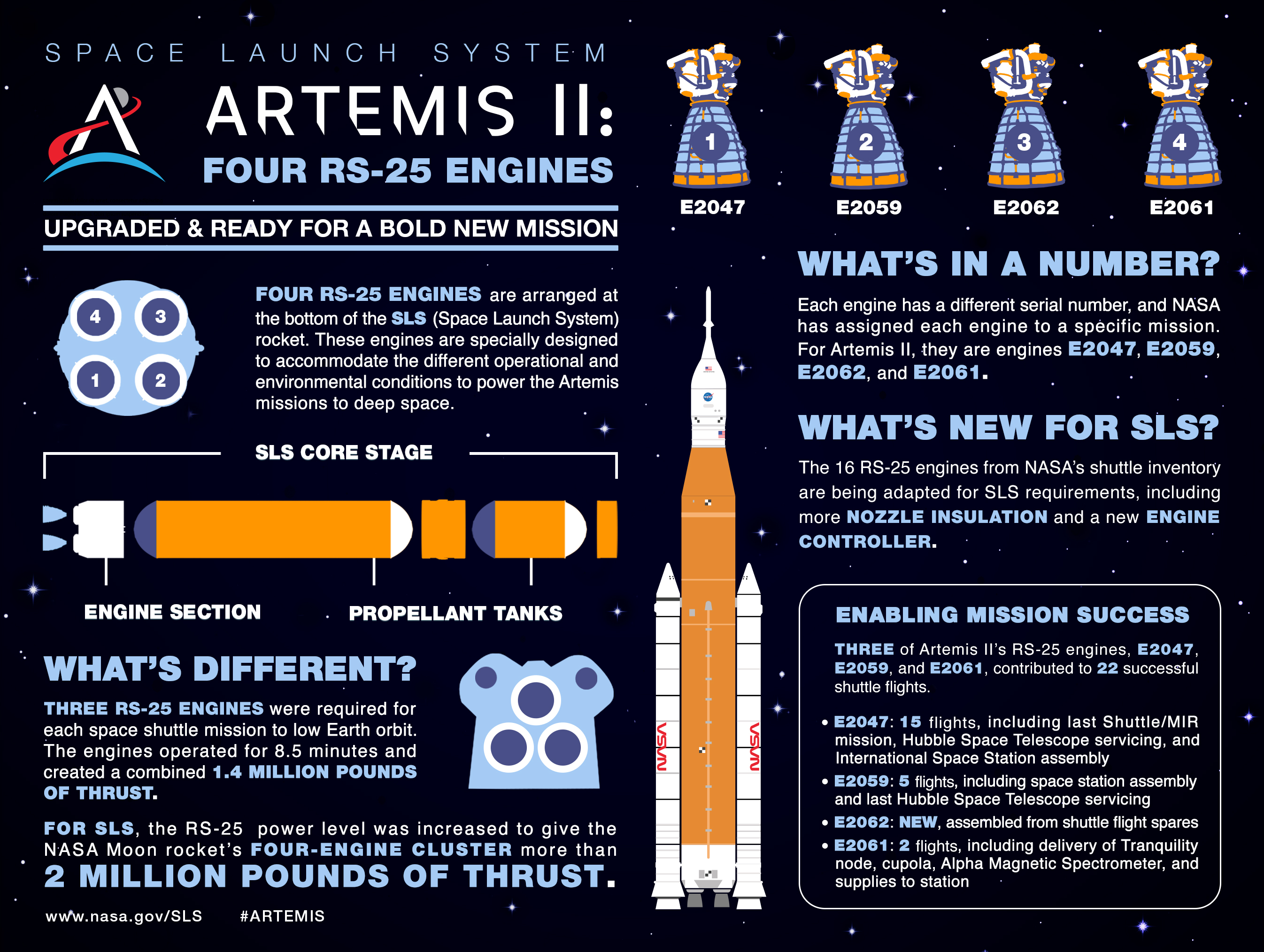NASA is gearing up for one of the most significant missions in decades: Artemis II, the first crewed test flight under the Artemis program. Artemis II is built on the successful uncrewed Artemis I in 2022, & Artemis II will demonstrate a broad range of capabilities needed on deep space missions. This will be NASA’s first mission with crew aboard the SLS (Space Launch System) rocket and Orion Spacecraft.
LIVE: Experts are discussing the latest on the Artemis II mission.
— NASA (@NASA) September 23, 2025
Artemis II, which will send four astronauts around the Moon next year, will prepare us for crewed missions to the lunar surface and future Martian missions. https://t.co/cSYV1KcEi9
In this mission, four astronauts will venture to the moon and establish a long-term presence there for science and exploration through Artemis. This 10-day flight will help in confirming the systems and hardware needed for early human lunar exploration missions.
This mission will pave the way for humans to return to the Moon after more than 50 years and prepare for future journeys to Mars.
What is the launch date of the Artemis II Mission?
Artemis II is scheduled to launch in April 2026 from NASA’s Kennedy Space Centre, Florida. The mission will last about 10 days, taking astronauts farther into space than any human crew has ever travelled.

Source: NASA
Mission Overview
-
Objective of Artemis II: To test the Orion spacecraft with crew aboard in deep space.

Source: NASA
-
Trajectory of Artemis II: After launch on the Space Launch System (SLS) rocket, Orion will orbit Earth twice—first in low orbit, then in high-Earth orbit—before heading toward the Moon.
-
Lunar Flyby: The spacecraft will follow a “free return trajectory,” flying about 4,700 miles beyond the Moon and then using Earth’s gravity to return safely.
-
What will be the evaluation tests during the Artemis II Mission?
-
Verification of life support systems (oxygen supply, carbon dioxide removal).
-
Evaluation of communications with NASA’s Deep Space Network.
-
A manual manoeuvre demonstration around the rocket’s upper stage for docking practice.
This mission will ensure Orion’s readiness for Artemis III, where astronauts are expected to walk on the lunar surface.

Source: NASA
Who are the Crew members of the NASA Artemis II Mission?
Four astronauts have been selected for NASA’s Artemis II Mission:
1. Reid Wiseman (Commander, NASA)

Source: NASA
He was selected as a NASA astronaut in 2013, and currently, he is assigned as Commander of NASA’s Artemis II mission to the moon.
2. Victor Glover (Pilot, NASA)

Source: NASA
He was selected as a NASA astronaut in 2009, and currently, he is assigned as Pilot of NASA’s Artemis II mission to the moon. Previously, he also served as a pilot of NASA’s SpaceX Crew-1 mission to the International Space Station as part of Expedition 64
3. Christina Koch (Mission Specialist, NASA)

Source: NASA
She was selected as a NASA astronaut in 2013, and currently, she is assigned as a Mission Specialist on NASA’s Artemis II mission to the moon. She has served mostly as a flight engineer on board the International Space Station as part of Expeditions 59, 60, and 61.
4. Jeremy Hansen (Mission Specialist, Canadian Space Agency)

Source: NASA
He is an astronaut of the Canadian Space Agency (CSA), and he will fly to the Moon on the Artemis II mission, which will be the first crewed flight test of the Orion spacecraft launching on the SLS rocket. He will become the first Canadian to ever venture to the Moon.
Conclusion
The Artemis II mission will mark a pivotal step in the history of human space exploration for conducting the test of the Orion spacecraft with a crew of four. Its launch is scheduled in April 2026, and the total 10-day flight will orbit the moon, which will pave the way for sustained human presence on the moon and eventual journey to Mars.
Comments
All Comments (0)
Join the conversation